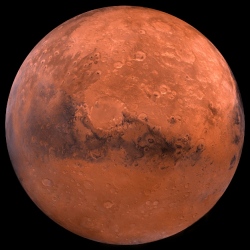
Curiosity rover has found new evidence on Mars that suggests Mars could have supported ancient life, as well as new evidence in the Martian atmosphere that relates to the search for current life on the Red Planet. These findings are a good sign for future missions exploring the planet’s surface and subsurface.
The new findings – “tough” organic molecules in three-billion-year-old sedimentary rocks near the surface, as well as seasonal variations in the levels of methane in the atmosphere.
Although the surface of Mars is inhospitable today, there is clear evidence that in the distant past, the Martian climate allowed liquid water – an essential ingredient for life as we know it – to pool at the surface. Data from Curiosity reveal that billions of years ago, a water lake inside Gale Crater held all the ingredients necessary for life, including chemical building blocks and energy sources.
“The Martian surface is exposed to radiation from space. Both radiation and harsh chemicals break down organic matter,” said Eigenbrode. “Finding ancient organic molecules in the top five centimeters of rock that was deposited when Mars may have been habitable, bodes well for us to learn the story of organic molecules on Mars with future missions that will drill deeper.”
The Curiosity rover has been sampling on Mars for the past 5 years and used two instruments in the SAM (Sample Analysis at Mars) suite to catch traces of complex organics preserved in 3-billion-year-old sediments. Heating the sediments released an array of organics and volatiles reminiscent of organic-rich sedimentary rock found on Earth.
Most methane on Earth is produced by biological sources, but numerous abiotic processes have been proposed to explain martian methane. Webster et al. report atmospheric measurements of methane covering 3 martian years and found that the background level varies with the local seasons. The seasonal variation provides an important clue for determining the origin of martian methane.
Organic matter was preserved in lacustrine mudstones at the base of the ~3.5-billion-year-old Murray formation at Pahrump Hills, Gale crater, by the Sample Analysis at Mars instrument suite onboard the Curiosity rover. Diverse pyrolysis products, including thiophenic, aromatic, and aliphatic compounds released at high temperatures (500° to 820°C), were directly detected by evolved gas analysis.
Thiophenes were also observed by gas chromatography–mass spectrometry. Their presence suggests that sulfurization aided organic matter preservation. At least 50 nanomoles of organic carbon persists, probably as macromolecules containing 5% carbon as organic sulfur molecules.
